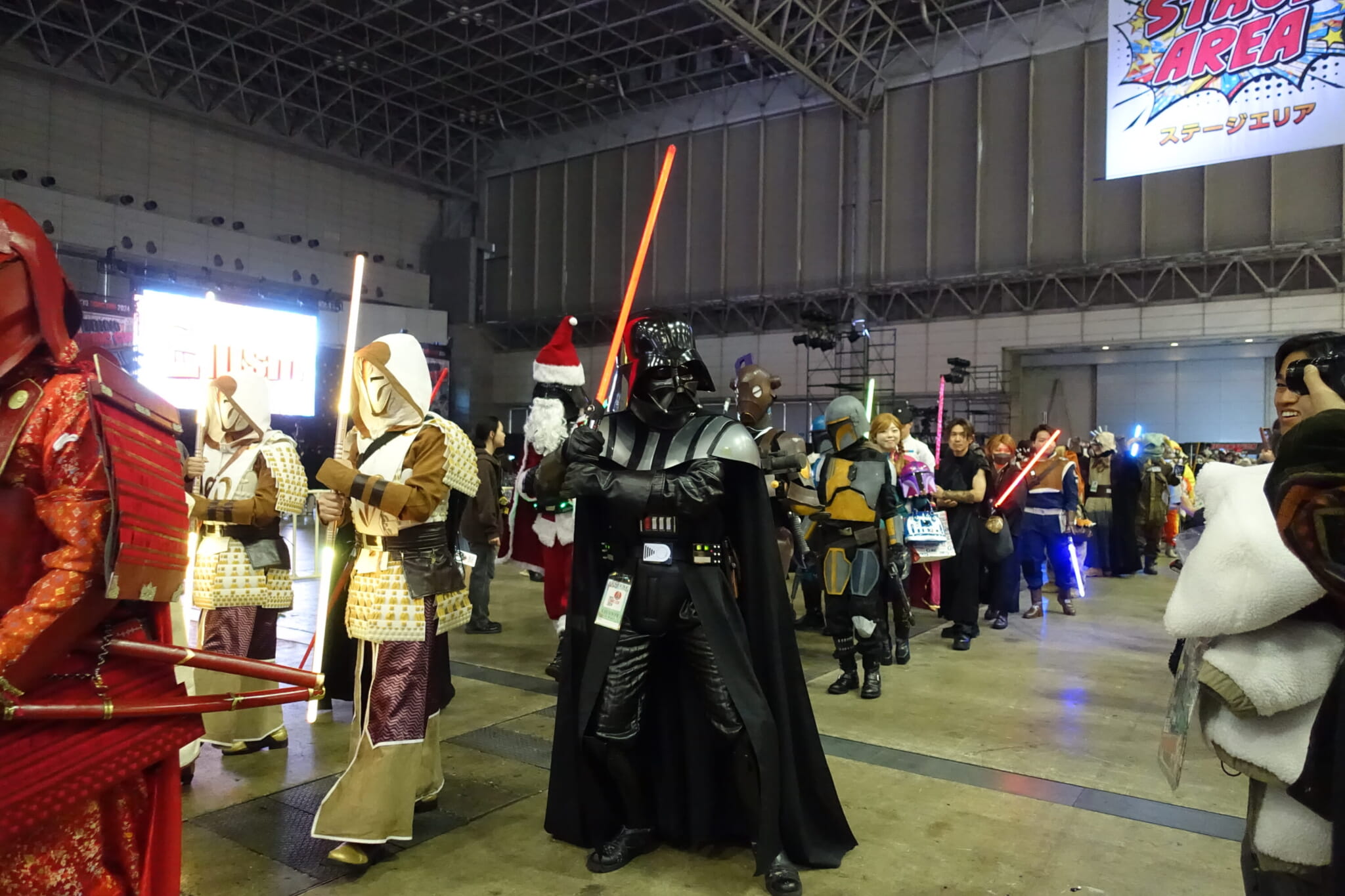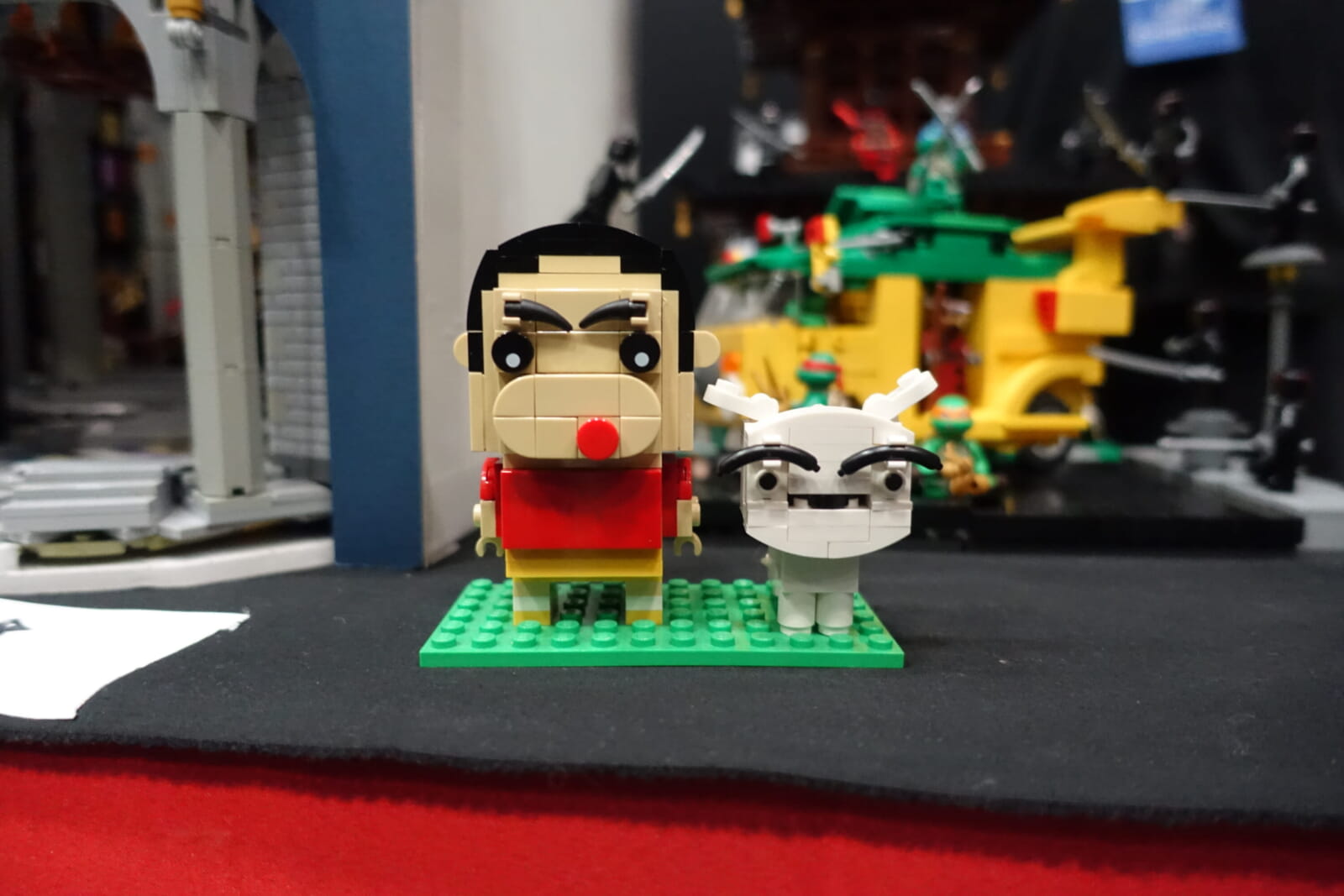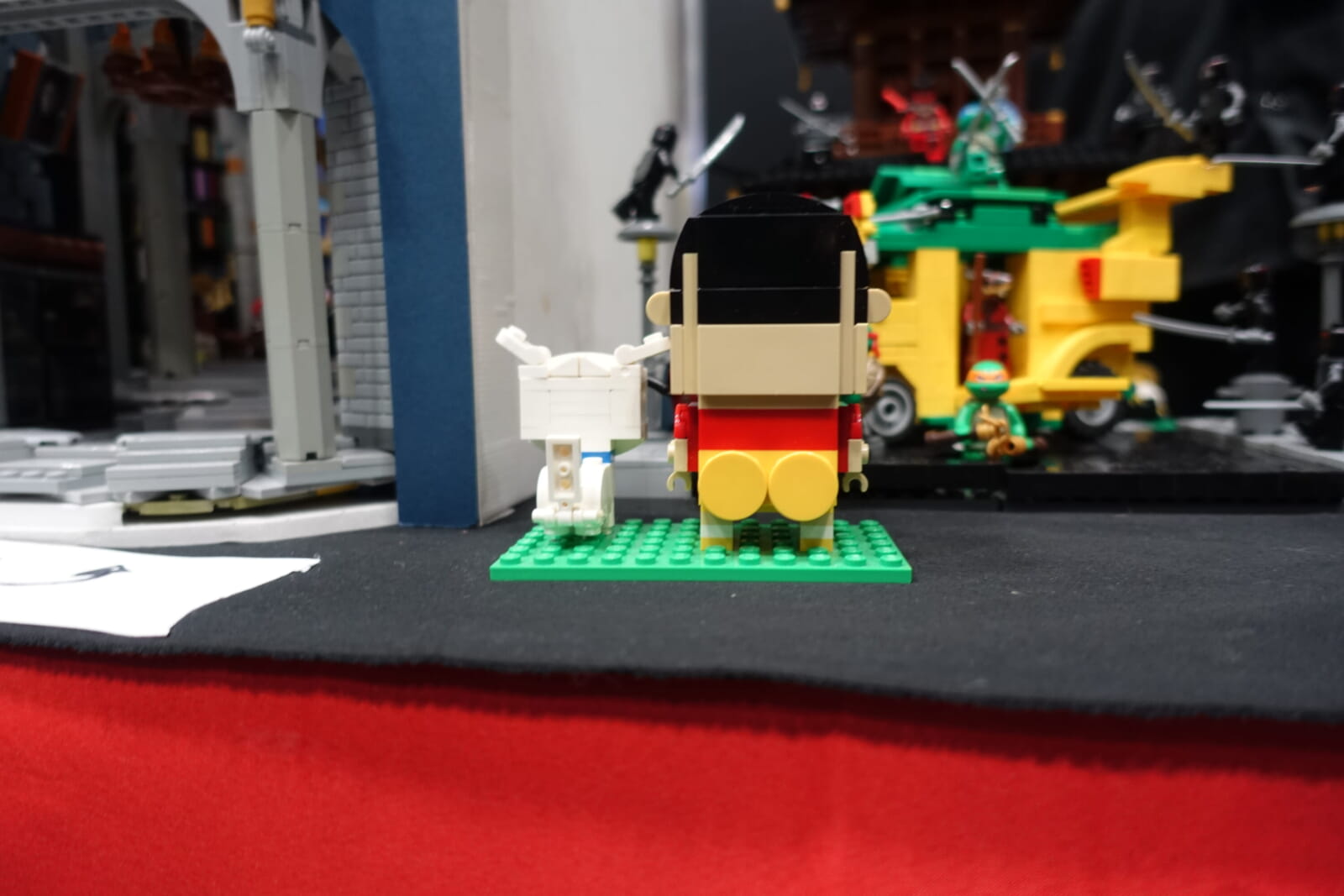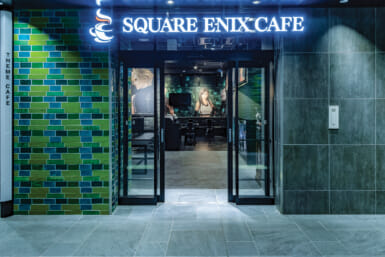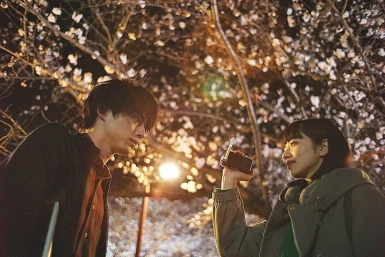Tokyo Comic Con is an annual celebration of global pop culture, from comic books to video games, movies, horror and more. The last installment of the all-out geek-out (December 6–8, 2024) brought such stars as Jason Momoa, Morena Baccarin, Jude Law, Benedict Cumberbatch and Mads Mikkelsen to Japan. But the con wouldn’t have been possible without the people who rarely get mentioned in the promo materials: the fans.
Though TCC attracts folks from all over the world, its audience is, naturally, mainly made up of Japanese people who bring with them their own approach to fandom. Tokyo Weekender spoke to a number of foreign creators at the con to learn what sets Japanese geeks apart from their foreign counterparts. This is what we learned:
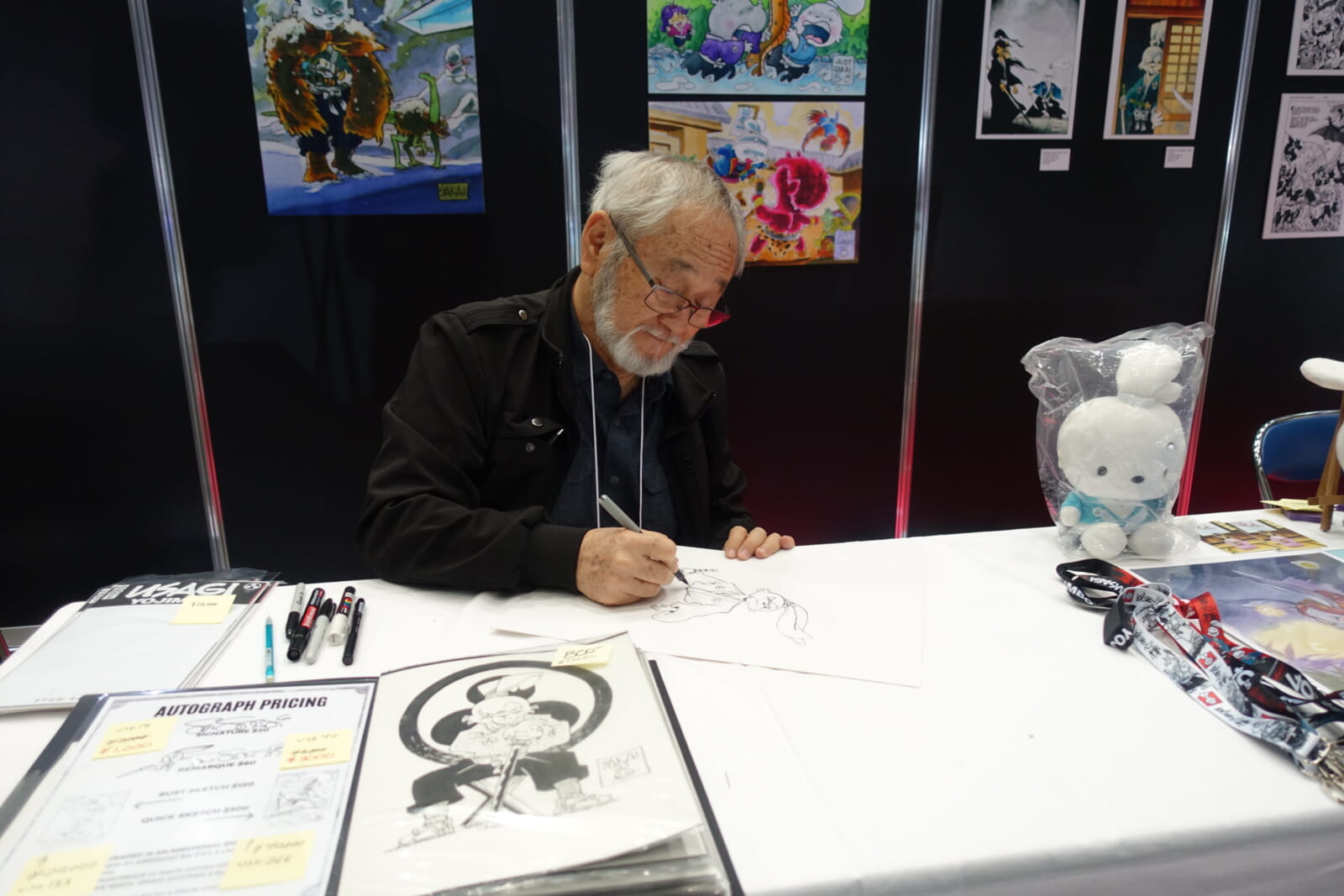
Stan sakai
Hidden Fires
If you made a list of the quietest things ever, “pop culture fandoms” would rank near the very bottom, somewhere between “industrial foghorns” and “a jackhammer crossed with a megaphone.” Not in a bad way, though. “Fandom” is just another way of saying “people with passion,” and passion often expresses itself at large volumes. Often, but not always.
“I’ve been to Japan many times, but this is the first time I’ve been to a Japanese convention,” said Stan Sakai, author of Usagi Yojimbo, a popular comic about a rabbit ronin and other anthropomorphic animals in feudal Japan. “The people here are so polite, and they queue up nicely, and they wait their turn. It’s wonderful.” Jeff Keane, the current author of The Family Circus syndicated comic strip, offered a parallel observation: “It’s a lot more calm. It’s less frenetic. Less jumping around or trying to fight your way through the crowds. It’s more organized.”
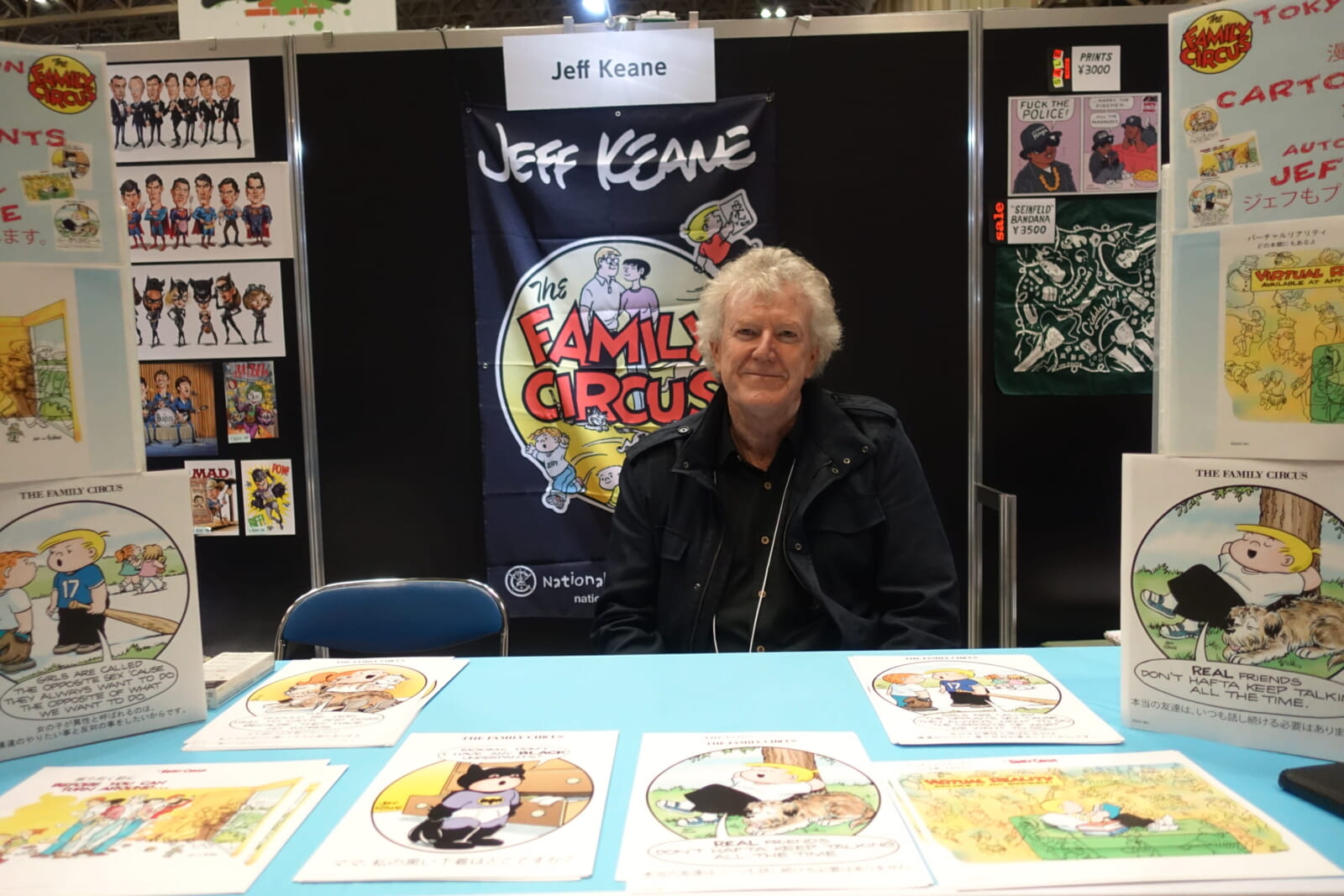
jeff keane
This in no way is meant to suggest that Japanese geeks aren’t excited about pop culture. It just takes time for them to show you their fire. Edwin Knight from KLUG, a Kansai-based Lego fan group with a Kanto branch, said that when it comes to brick-building in Japan, “The fandom here is more online, more private. But once you get everyone together with the same hobby in one place, it breaks down all barriers,” and you eventually see people get fired up.
An oft-repeated sentiment from exhibitors centered on the demeanor of Japanese fans: They’re very direct and know exactly what they want, and that hyper-focus can, ironically, come off as coldness. But the artists see right through that. Sakai, expressing his hope to make many new friends among Japanese fans, shared, “I have been going to [cons] for 45 years, and you see the same people every year, and it’s like seeing an old friend again.”
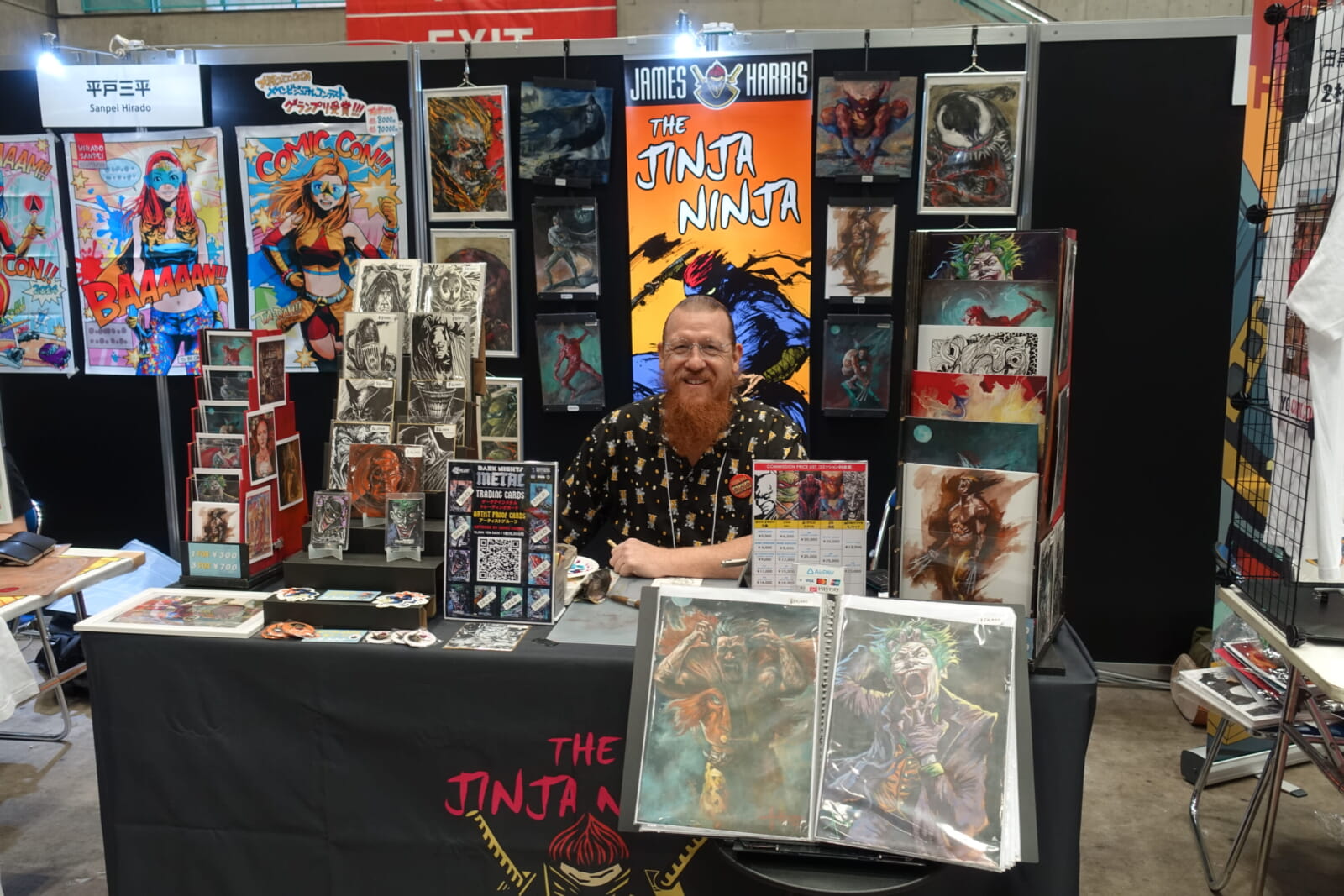
james harris
Size Matters
Japan’s pop culture fandom is huge, with a lot of big energy bubbling just beneath the surface. What it yearns for, however, tends to be small. Comic book artist and illustrator James Harris had this to say on the matter: “Japanese fans like to go with smaller hand-drawn sketches. That’s why I provide the mini shikishi size [~12 x 13.5 cm].” This is influenced by pragmatism more than anything else.
“I think that because of the housing here being smaller,” the Japan-based Harris continued, “people want something that’s a little bit easier to put up in their homes. It’s funny, I’ve seen some of the Western artists who have never seen the shikishi sketches before, and I was like, if you’re going to sell in Japan, you should do some work on this because they are really popular.”
A similar trend was on display at KLUG’s Lego booth, where petite plastic brick creations ruled. That’s not to say that Lego life in Japan is always diminutive in size — KLUG’s Knight is no stranger to big projects, even assembling a 75-centimeter-tall Osaka Castle for a Lego exhibition raising money for an orphanage in 2014.
The relatively smaller Lego models his group showed off at TCC were delightfully creative and spoke to the reality of Lego building in Japan. As Knight explained, “The major differences between the Japanese builders and the international builders is probably that Europeans and Americans have big houses, so the models are bigger. But in Japan, because Lego is expensive and space is limited, they have to utilize every part very carefully, so the models are smaller but very intricate.” The elaborate Lego helmet created by a Japanese KLUG member perfectly illustrated his point.
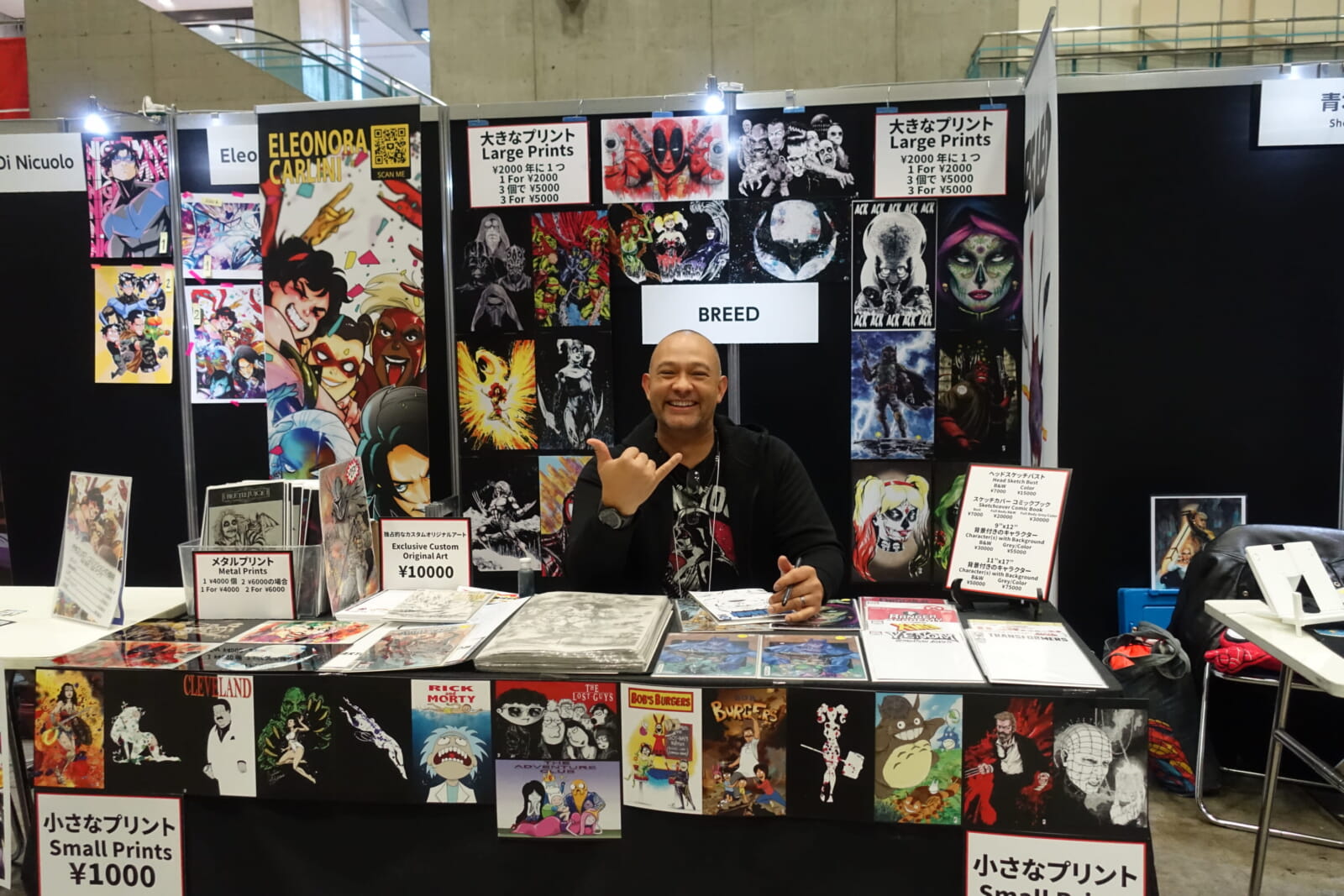
bobby breed
Standing United
Western geeks often divide themselves along some lines, especially when it comes to superheroes, like Marvel vs. DC. Many of the exhibitors at Tokyo Comic Con said they did not see things like that among Japanese fans. “They really appreciate original art, and they are so positive about it — the specific fandoms don’t necessarily matter,” said comic book artist Bobby Breed.
Based on the sketch commissions he got, Harris, the comic book artist and illustrator, also noticed that Japanese geeks — with some exceptions — don’t limit themselves to one comic book company and their characters: “It changes every time. Right now, it’s Deadpool. Last year, it was just an insane amount of Lokis. It really depends on what is popular at that time.” But here’s an important consideration to keep in mind: It’s not that Japanese fans just consume anything and have no individual tastes but rather that they look at American comic books — and, in a larger sense, American pop culture — as just that. American.
When you’re on the outside, like Japanese fans of Western culture, you tend to take a broader view of the object of your obsession. Once you take a step back, the divisions that some geeks fight tooth and nail over seem so … unnecessary, allowing you to enjoy what makes you happy without worrying about whether it fits your own personal geek brand. Maybe that’s what keeps Japanese geeks so calm and composed on the outside: the lack of those kinds of hang-ups on the inside.

